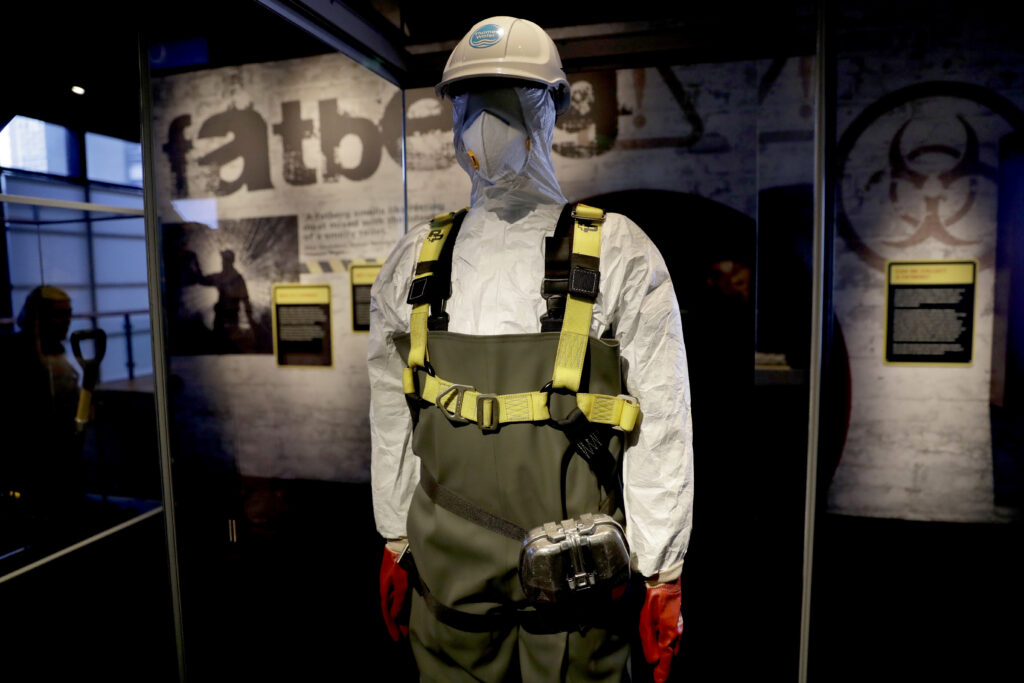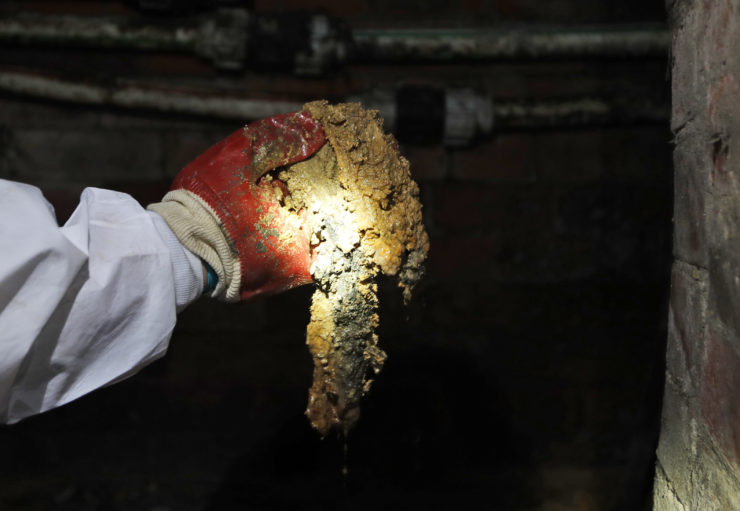“We walk through life influenced by all sorts of weird stuff,” says “Letter of Recommendation” editor Willy Staley. His column in The New York Times Magazine offers a place to celebrate those obsessions, fascinations and private joys, in a tight 900 words.
It lurks underground like an iceberg, a “giant force capable of sinking ships” — or of upending comfortable assumptions about our civilized, sanitized cities.
The brainchild of staff writer Sam Anderson, who wrote the first column on Fleetwood Mac’s “Tusk,” the column has become a staple since the magazine’s redesign in 2015 and now offers, in Staley’s words, a space for writers to “run wild on what they love.”
The main challenge of the column, Staley finds, is narrative momentum, finding an arc that allows readers to “settle in” to a story. Although 900 words isn’t long, it’s too long to just hear writers simply wax rhapsodic about something they love — it’s not an advertisement, after all, but a hybrid form of the personal essay. Staley points to an early example he loves, by Mary H.K. Choi, that “recommended” the cult favorite LaCroix seltzer as a way of exploring the writer’s journey to sobriety in her 30s.

Nicola Twilley’s piece in the magazine on March 27 was quite a departure, even for a column that’s run appreciations of subjects as diverse and not-immediately-appealing as hangovers, hysterectomies, cold showers and “House Hunters.” The story celebrated the “fatberg,” described memorably by Twilley as a “monstrous subterranean clot the length of 22 double-decker buses with the weight of a blue whale,” born in the sewers of London in the fall of 2017 by an unholy alliance of cooking grease, wet wipes and the everyday detritus of a city.
The term fatberg, Twilley tells me, has been adopted as a semi-official industry term, displacing the much less visceral acronyms F.O.G. (fats, oils and grease) or F.R.O.G (fats, roots, oil and grease), to name this weird, disgusting thing that lurks underground like an iceberg, a “giant force capable of sinking ships” — or of upending comfortable assumptions about our civilized, sanitized cities.
Before the city’s water company broke down and disposed of the monster clot, the Museum of London requested a piece for its collection, seeing in it a story of urban deprivation and the confluence of fast-food restaurants in the Whitechapel neighborhood where the fatberg was found. There, behind glass, the fatberg was sanitized and contained, neutralizing even its smell, “a cocktail of rotting meat mixed with dirty diapers, its rancid base notes all but drowned out by an ammoniac tang.”
Both Twilley and her editor were struck by the ironic convergence of the cooking grease and the detergent-impregnated wipes that were meant to wash it away, resulting in the preservation of both. Although she’s primarily a science writer, Twilley has a background in art history, and she saw the museum’s fatberg as a “collective self-portrait,” transformed into an object of fascination, if not quite beauty. She draws an analogy with the sculptor Rachel Whiteread’s iconic “House,” the cast of the inside of a terraced house a few miles northeast of Whitechapel, calling the fatberg an “accidental Whiteread.”
I asked Twilley why she thought the fatberg would make a good “Letter of Recommendation” subject, and she explained that the column’s title suggested a fit, evoking the language of a Victorian scientist talking about his “enthusiasms.” She visited the exhibit at the Museum of London after the magazine accepted the piece, and was struck by the discovery that she was far from alone in her enthusiasm.
“People were buying fatberg fudge and T-shirts,” she says. Lines of visitors were “marveling at it,” overlooking nearby displays of Roman treasures.
In her conversations with the museum’s head of conservation, Twilley discovered the challenges of preserving something that was not exactly alive, but ever-changing — first “sloppy, with reddish maggots visibly writhing beneath its glutinous surface,” and later, as it dried, beginning “to crumble, revealing the treasures concealed within.” Her descriptions evoke the horrified fascination of looking closely at something “superlatively revolting,” but she says it was a challenge to bring that sense of personal passion into a piece that, in its initial draft, was long on reported detail.
“The word ‘I’ had been almost removed from my vocabulary,” Twilley says. During three rounds of edits with Staley, she was “gently urged” to put herself back in the story, to make it clear and explicit why she found this object so fascinating.
Behind glass, the fatberg was sanitized and contained, neutralizing even its smell, “a cocktail of rotting meat mixed with dirty diapers, its rancid base notes all but drowned out by an ammoniac tang.”
Editor Staley describes the Letter of Recommendation column as “aggressively counter-programmed” to avoid news pegs and timely hooks. Our curiosities, after all, don’t follow the news cycle, and more than ever, we’re eager to find space outside it.
Twilley was also drawn to the column for its resistance to newsworthiness, which she says she’s always too slow to catch. Instead, the format of the column seemed to act on the subject in much the same way as the museum case acted on the fatberg — changing its meaning by changing its context.
“The two things are stretched by each other: stretch the format, it will stretch my piece.” That process of mutual expansion results in a capacious essay, despite its relatively short length, that challenges us to question what makes an object worthy of preservation, display and, indeed, recommendation.



